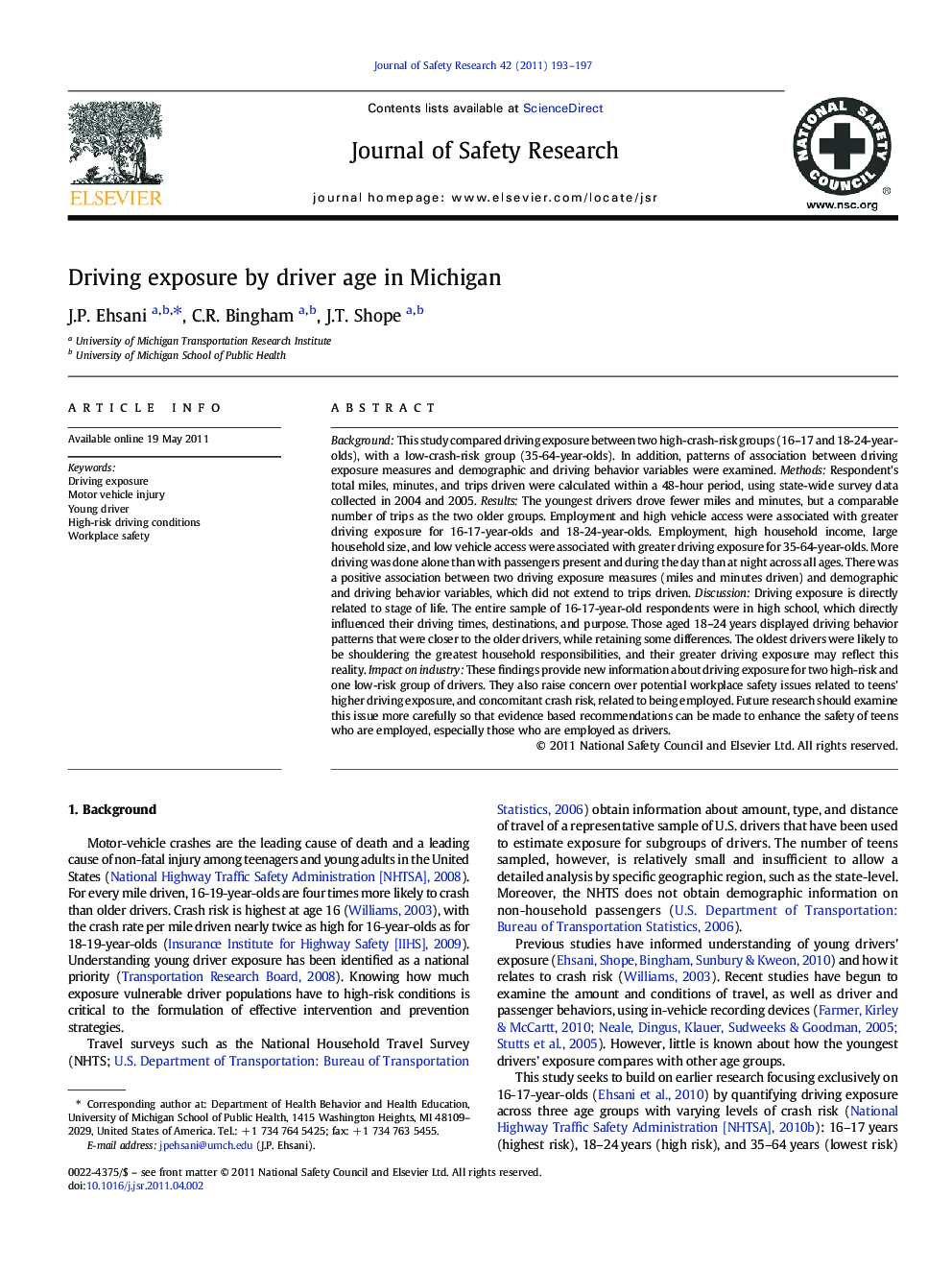| Article ID | Journal | Published Year | Pages | File Type |
|---|---|---|---|---|
| 587493 | Journal of Safety Research | 2011 | 5 Pages |
BackgroundThis study compared driving exposure between two high-crash-risk groups (16–17 and 18-24-year-olds), with a low-crash-risk group (35-64-year-olds). In addition, patterns of association between driving exposure measures and demographic and driving behavior variables were examined.MethodsRespondent's total miles, minutes, and trips driven were calculated within a 48-hour period, using state-wide survey data collected in 2004 and 2005.ResultsThe youngest drivers drove fewer miles and minutes, but a comparable number of trips as the two older groups. Employment and high vehicle access were associated with greater driving exposure for 16-17-year-olds and 18-24-year-olds. Employment, high household income, large household size, and low vehicle access were associated with greater driving exposure for 35-64-year-olds. More driving was done alone than with passengers present and during the day than at night across all ages. There was a positive association between two driving exposure measures (miles and minutes driven) and demographic and driving behavior variables, which did not extend to trips driven.DiscussionDriving exposure is directly related to stage of life. The entire sample of 16-17-year-old respondents were in high school, which directly influenced their driving times, destinations, and purpose. Those aged 18–24 years displayed driving behavior patterns that were closer to the older drivers, while retaining some differences. The oldest drivers were likely to be shouldering the greatest household responsibilities, and their greater driving exposure may reflect this reality.Impact on industryThese findings provide new information about driving exposure for two high-risk and one low-risk group of drivers. They also raise concern over potential workplace safety issues related to teens’ higher driving exposure, and concomitant crash risk, related to being employed. Future research should examine this issue more carefully so that evidence based recommendations can be made to enhance the safety of teens who are employed, especially those who are employed as drivers.
Research highlights► Driving exposure information for young drivers is lacking, and has been identified as a national priority ► Using three measures of driving exposure (miles, minutes, and trips driven), this study compared driving exposure between two high-crash-risk groups (16–17 and 18-24-year-olds), with a low-crash-risk group (35-64-year-olds) ► 16-17-year-olds drove fewer miles and minutes, but a comparable number of trips to 18-24-year-olds and 35-64-year-olds ► Driving exposure patterns of 18-24-year-olds more closely resembled 35-64-year-olds than 16-17-year-olds ► A positive association was observed between the patterns of miles and minutes driven, which did not extend to trips driven.
